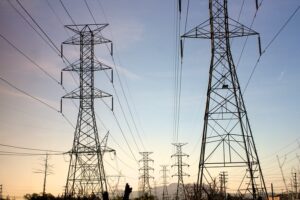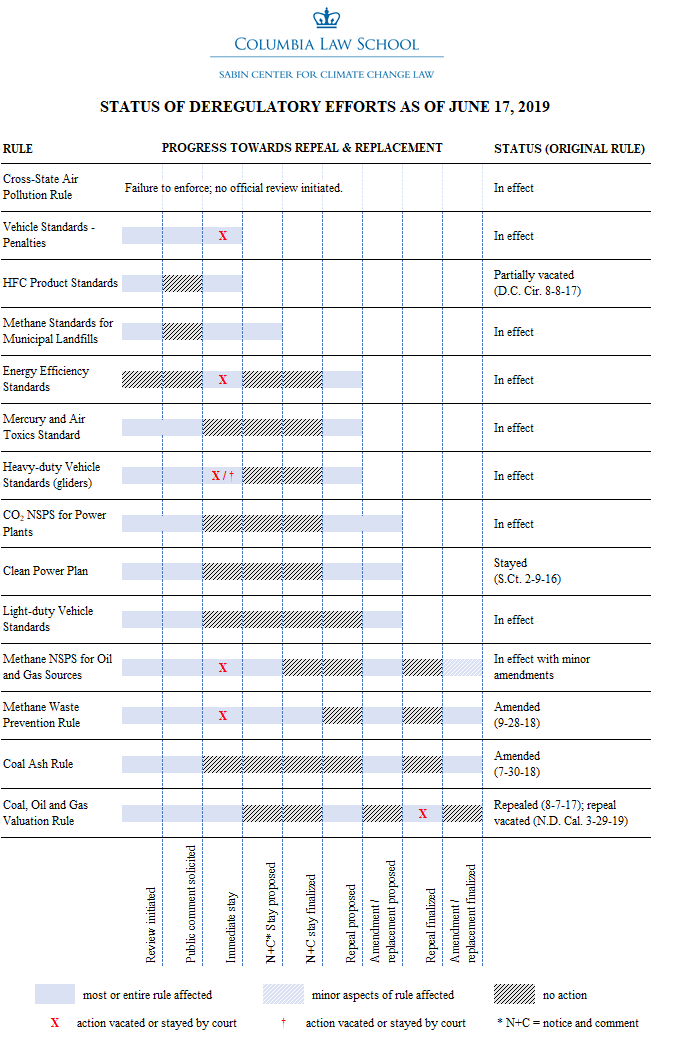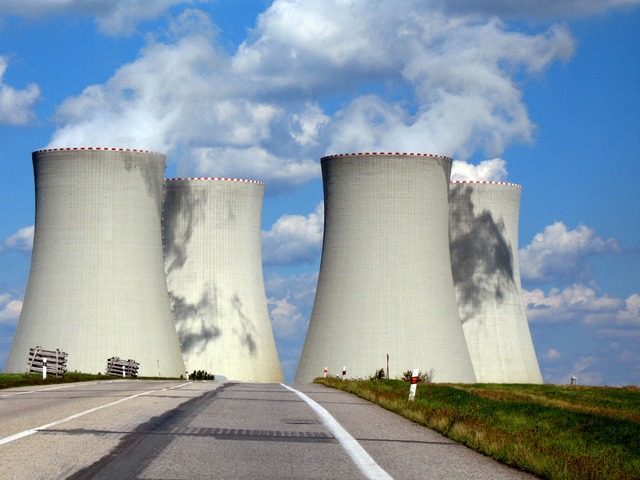By Romany M. Webb

Last Thursday, December 15, the Federal Energy Regulatory Commission (FERC) issued a notice of proposed rulemaking (NOPR) seeking comments on proposed changes to its regulations governing the siting of interstate electric transmission lines. FERC is proposing the changes to implement section 40105 of the 2021 Infrastructure Investment and Jobs Act (IIJA) which expanded the scope of federal authority over transmission siting. That was historically an area of exclusive state jurisdiction but, with frustrations mounting over the slow pace of transmission development, FERC looks set to play an increasing role in the approval of new infrastructure. This could help to accelerate build-out of the transmission system—something that is urgently needed to facilitate increased renewable generation. It is, however, important that the build-out occurs in a way that does not cause undue harm to the environment, local landowners, or other stakeholders. The regulatory changes proposed by FERC appear designed to achieve these dual goals but challenges remain.
Transmission development has long been fraught with complexity and delay. This is particularly true of transmission lines that pass through multiple states. Consider, for example, the Grain Belt Express Clean Line. First proposed in 2014, the 780-mile transmission line is intended to transport electricity generated by wind turbines in Kansas to customers in Indiana, passing through Missouri and Illinois along the way. It required approval from all four states to move forward. Regulators in Kansas, Illinois, and Indiana signed-off on the project, but the Missouri regulator denied approval for it, preventing it from moving forward. The developer challenged the denial in court and won but, in the meantime, an Illinois court overturned that state’s approval of the line, again blocking development. Today, eight-years after the line was first proposed, construction still has not begun.
How could this happen? In the Federal Power Act of 1935, Congress authorized the former Federal Power Commission (now FERC) to regulate “the transmission of electric energy in interstate commerce,” thereby giving it authority over interstate transmission rates and facilities. Importantly, though, Congress did not authorize FERC to oversee the siting of new transmission. The siting of transmission thus remained within the exclusive authority of the states. The effect is that, where a proposed transmission line travels through several states, it must be approved by all of them. (There is only one limited exception to this (discussed below).)
A 2020 study found that, in most states, regulators can only approve a transmission line if they determine it is “in the public interest.” State law often provides that, in assessing the public interest, the regulator can consider “only the interests of in-state residents and businesses.” When a transmission line is proposed to move electricity between two states and passes through others along the way, there may be little direct benefit to residents and businesses in those “pass-through” states. Construction of the line may have short-term economic benefits for pass-through states (e.g., in terms of job creation) but also presents risks and challenges. In recent years, transmission projects have often faced opposition from local communities and landowners concerned about their visual impacts, among other things.
The need for multiple state approvals, together with the frequent local opposition, has made building new interstate transmission lines extremely difficult. That must change if the U.S. is to achieve its climate goals. The Biden Administration has set an ambitious goal of cutting U.S. greenhouse gas emissions by 50 to 52 percent below 2005 levels by 2030. To get there, the U.S. will need to rapidly decarbonize its electricity generating system, replacing fossil fuel power plants with renewable energy systems. It will also need to electrify various end-use sectors that currently rely on fossil fuels (e.g., transportation and buildings) which will further increase the need for renewable generation.
Significant support for these actions was provided in the Inflation Reduction Act (IRA), which President Biden signed into law in August. Modeling suggests that, by driving investments in renewable generation, electric vehicles, and other clean technologies, the IRA could reduce U.S. greenhouse gas emissions by 40 percent below 2005 levels by 2030. Emissions reductions of that magnitude will, however, only be possible if transmission development accelerates rapidly. According to analysis by Princeton’s REPEAT Project, over the last decade, the U.S. transmission system grew at an average annual rate of just one percent per year. The analysis shows that, if transmission development continues at that rate through 2035, “[o]ver 80% of the potential emissions reductions delivered by [the] IRA in 2030 are lost . . . To unlock the full emissions reduction potential of the [IRA], the pace of transmission expansion must more than double . . . to reach an average of 2.3%” per year.
Recognizing the need to speed up transmission development, in section 50152 of the IRA, Congress appropriated $760 million to the Department of Energy (DOE) to support state government programs designed to “improve the chances of, and shorten the time required for, approval” of new interstate transmission lines. DOE can also use the funding to provide grants to state governments “for economic development activities” in communities that “may be affected by the construction and operation of” approved lines. That could help to reduce local opposition to transmission development in some areas, but securing state approval for interstate lines is likely to remain challenging in many cases. This has led some lawmakers and others to advocate for greater federal control of transmission development.
In a recent episode of the Columbia Climate School’s “Sustain What?” podcast, Representative Sean Casten said that if he were given a “magic wand” and could do anything to support transmission development he would “give someone . . . ideally FERC, single source permitting authority” over new interstate transmission lines. Representative Casten said he would choose FERC because it already has exclusive authority to approve new interstate natural gas pipelines. As previously reported on this blog, FERC has approved almost every pipeline project it has considered in recent years, often in as little as three months. This has led to allegations that FERC operates as a “rubber stamp” and approves pipeline projects without adequately considering landowner concerns or environmental impacts. With respect to the latter, the Sabin Center and others have long argued that FERC has a legal obligation to consider the climate impacts of pipeline development, but often fails to do so in a robust way. (For more on that, see our 2020 report here.)
Congress has, so far, refused to give FERC exclusive authority to approve all interstate transmission projects. However, in section 1221 of the Energy Policy Act of 2005, Congress gave FERC limited “backstop” authority to approve certain projects in areas designated as “national interest electric transmission corridors” by DOE. Specifically, the Act authorized FERC to approve projects in designated corridors if six criteria were met, namely:
- The project must “be used for the transmission of electric energy in interstate commerce.”
- The project must be “consistent with the public interest.”
- The project must “significantly reduce transmission congestion” and “protect[] or benefit[] consumers.”
- The project must be “consistent with sound national energy policy and . . . enhance energy independence.”
- If the project involves modification of an existing transmission line, it must “maximize
. . . the transmission capacities of” that line. - The project could not move forward without federal approval because:
- a state in which transmission facilities are to be located lacks authority to approve the project or to consider its interstate or interregional benefits;
- state law only provides for approval of projects developed by utilities that serve in-state customers and the developer does not; or
- a state with authority to approve the project has “withheld approval for more than 1 year” or “conditioned its approval in such a manner that the proposed [project] will not significantly reduce transmission congestion . . . or is not economically feasible.:
In 2007, FERC issued Order No. 689, in which it explained how it would exercise this new authority. Among other things, Order No. 689 clarified FERC’s interpretation of criteria 6(c), indicating that if a state considered but rejected an application for approval of a transmission project, that rejection would amount to the state “withholding approval” for the project and thus enable FERC to approve it (if the other criteria were met). This aspect of Order No. 689 was struck down in 2009 in Piedmont Environmental Council v. FERC, with the Fourth Circuit Court of Appeals holding that FERC could not approve a project that had been expressly rejected by a state. Many commentators subsequently complained that the court’s decision would severely limit FERC’s ability to advance interstate projects. In the words of one legal expert, “a single state regulator may kill an interstate transmission project and FERC has no authority to intervene, regardless of the value of the project.”
More than a decade after the Piedmont decision, Congress finally stepped in in 2021. As a result of amendments enacted via the IIJA, FERC can now approve a transmission project in a designated corridor if a state “has denied an application seeking approval” of the project, and criteria 1 through 5 above are also met. (The IIJA also made changes to the corridor designation process designed to address another court decision—California Wilderness Coalition v. DOE—in which the Ninth Circuit vacated the only two corridor designations ever issued by DOE.)
In the NOPR it issued last week, FERC proposed changes to its regulations governing the approval of interstate transmission facilities to “ensure consistency with the IIJA’s amendments,” and “incorporate other updates and clarifications to provide for the efficient and timely review of” applications. FERC’s proposed regulatory changes appear designed to accelerate interstate transmission projects, while also ensuring that landowners and others have adequate opportunities to weigh in on projects.
To achieve the former goal, FERC is proposing to allow transmission developers to begin the pre-filing process for federal approval of a project at the same time as they apply for state approval. This represents a marked change from current FERC practice as, until now, developers have been unable to start the federal pre-application process until one year after submitting a state application. Eliminating the one year delay means that developers can move through the federal pre-application process while state authorities are considering their application. During the federal pre-application process, FERC staff will work with the developer to ensure they have provided all information required to evaluate the project, and begin gathering stakeholder input. Frontloading that work means that, if the state authority denies approval for the project, the federal process can begin immediately and FERC can quickly complete its review.
While FERC is clearly keen to expedite projects, it has also proposed reforms designed to enhance stakeholder participation in project reviews, seemingly in an effort to avoid the problems that have plagued its gas pipeline approval process. In the pipeline context, some landowners have accused developers of misrepresenting key facts about projects, and otherwise pressuring them to agree to development on their land. Seeking to pre-empt similar issues in the transmission context, FERC is proposing to require developers to comply with an “Applicant Code of Conduct” when engaging with affected landowners. The Code of Conduct would require developers to provide certain information to affected landowners, ensure that communications with them are factually correct, and avoid other forms of misconduct.
FERC is also proposing requirements which, it says, will ensure developers “meaningfully engage with potentially affected environmental justice communities.” Under the proposal, developers would be required to identify any such communities, and prepare an “Environmental Justice Public Engagement Plan” identifying “outreach activities that are targeted to the identified . . . communities.”
These and other reforms proposed by FERC should help to advance responsible interstate transmission development. They are, however, only a first step. Even if the reforms are implemented, interstate transmission projects are likely to continue to face significant challenges, which must be overcome if the U.S. is to achieve its clean energy ambitions.
This is test biographical description.




